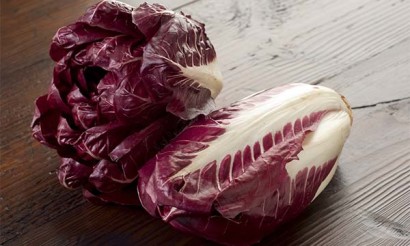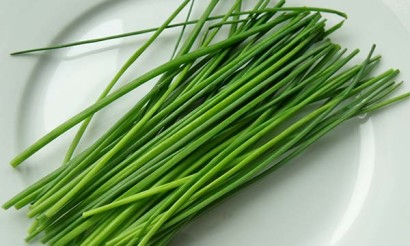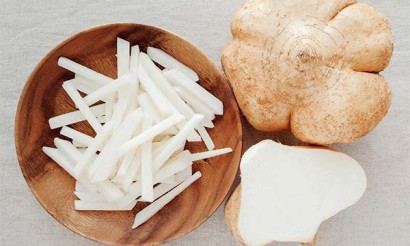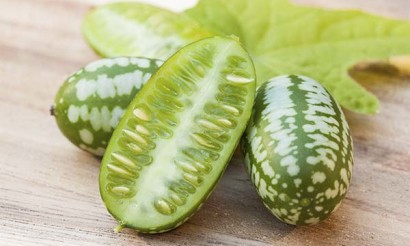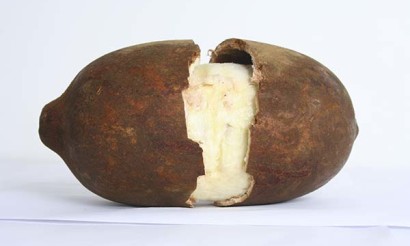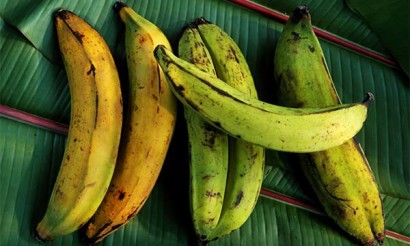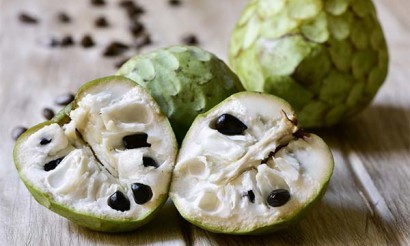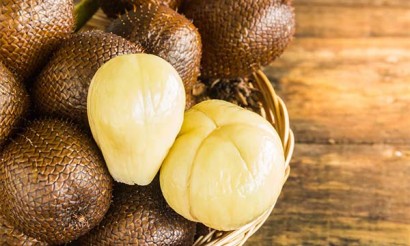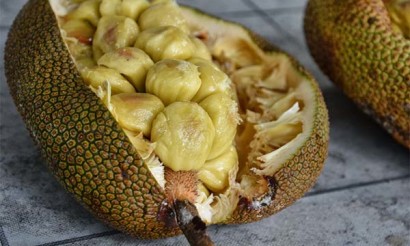Gandaria: what is this fruit and why is it useful?
Travelers visiting Southeast Asia can taste dozens of exotic fruits, which are difficult to buy in the stores of the Northern Hemisphere. Tender southern fruits don't handle transportation well and spoil quickly. Canned and other preserves do not allow us to appreciate the flavor and aroma of southern delicacies. Gandaria fruits are among such rare products.
What kind of fruit is it?
Gandaria is a fruit tree in the Anacardia family, which includes the pistachio, mango and sumac. The rounded, elongated fruits of the plant resemble large apricots. Unripe fruits have a pale green color and a sour, tart taste. The viscous pericardium contains sticky, milky juice. As the fruit ripens, it becomes soft, light yellow or orange-yellow. The fruit is 2-7 cm long and weighs 35-100 g. The fruits grow on thin stalks and cover the branches densely.
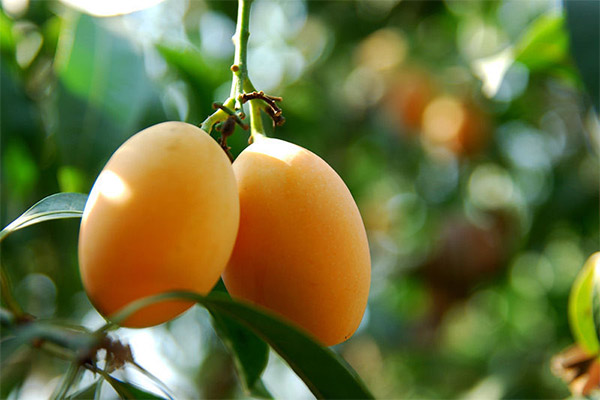
The delicate flesh of the ripe gandaria resembles the flesh of a plum tree in appearance and consistency. Its color is bright yellow or orange. The ripe fruit has a thin skin and a sweet or sour-sweet taste with a slight turpentine odor (reminiscent of Alfonso mango).
The kernel seeds are edible despite their bitterness and astringency. They can be pink, blue or purple.
What it looks like
Gandaria is a tall, spreading tree with an expansive crown. This evergreen plant is also called the marian plum. In English-speaking countries, you can find the names plum mango and mango plum. In all Asian countries where gandaria grows, there are local names for the species.
This powerful tree grows up to 27 m in height and the trunk diameter reaches 50-55 cm. Its large, dark green leaves have an elongated shape and pointed tips. The maximum length of the leaf plates is 45 cm, width - 12-13 cm.
The yellow flowers of gandaria are very small. The average size of the oblong ovate petals is 2-2.5 mm. The fruit of the tree is a kernel, similar to a large pit of its closest relative, the mango.
Where does it grow?
Gandaria is native to tropical islands and the coast of Southeast Asia. Now this fruit tree is cultivated in Thailand, Laos, Indonesia, Burma, the Philippines. It is cultivated on the islands of Sumatra, Ambon, Mauritius, Borneo, in the western part of Java island. The plant likes fertile soil, lowlands, humid and hot climate. Gandaria grow and in the intermountain plains, up to 850 m above sea level. The highest yields are obtained in areas where the average annual temperature is 24°C.
In Thailand, gandaria begins blooming in November and December and is harvested in April and May. On the equator and farther south in Indonesia, flowering takes place from June to November and the fruit ripen in March-June.
What is the fruit good for?
Gandharia is not only an exotic delicacy. In 100 grams of fruit contains:
- vegetable proteins - 0.5 g;
- carbohydrates - 11 g;
- fats - 0.2 g.
Fruit pericardium has vegetable fibers, fiber, water, ash components. The caloric value of the product (ripe pulp) - 42 kcal per 100 g. The fruit contains iron, phosphorus and calcium and other important trace elements.
Gandaria contains:
- ascorbic acid (vitamin C);
- B vitamins (riboflavin, nicotinic acid, thiamin);
- Beta-carotene.
The fruit is easy to digest and can be eaten at any time of the day. Mariana plum has not only nutritional, but also medicinal properties:
- The flesh of the fruit is saturated with water. The juice speeds up metabolic processes, quickly removes toxins and waste from the body.
- Fiber contained in the fruit and leaves helps cleanse the intestines.
- Vitamins increase metabolism, are involved in the formation of collagen, improve the condition of hair and skin, enhance immunity, ensure the normal functioning of all systems of the body.
- Beta-carotene is important for good vision and skin health.
The product's low calorie content, large amount of fiber and water allows it to be included in the menu of a day off. You should eat at least 26 grams of fiber per day to prevent intestinal diseases. Regular consumption of Marian plums reduces the risk of polyps and tumors of the gastrointestinal tract.
What harm can come from
Gandaria can be eaten without restrictions, if there is no individual allergic reaction to the product. But a person who has eaten a large amount of fruit, the following troubles may occur:
- diarrhea;
- nausea;
- yellowing of the whites of the eyes and skin;
- heartburn;
- muscle cramps;
- rash and skin itching;
- pain in the joints and muscles.
If you stick to the daily rate of consumption of the fruit, there will be no unpleasant effects. Gandaria is better consumed as a dessert rather than a main course.
How to eat gandaria properly
The pulp of the ripe and green fruits, as well as the young leaves, are eaten. You can use and large, large leaves, but they have a lot of tough fibers. Highly bitter kernels of kernels are also suitable for eating.
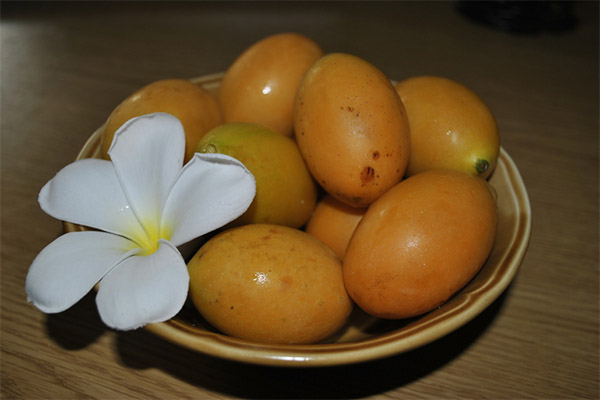
The ripe fruit is especially delicious fresh. Gandhara is thoroughly washed in running water and eaten (like a plum). Larger fruits can be cut in half and pips removed. Peel the skin is not necessary.
The leaves of the tree are edible both fresh and boiled. Young leaves are cut into slices as vegetables and added to rice and salads. Bitter seeds are used as a savory addition to sauces.
Green and unripe fruits are also edible. The product enhances the flavor and aroma of curries, Thai and Indonesian dishes, including rojak and asinan. The unripe fruit is added to fruit salads and sauces, pickled with herbs and vinegar.
What can be cooked from gandaria
You can make a fruit salad at home and add slices of ripe gandaria to it. This aromatic fruit successfully replaces the mango.
From the ripe fruit you can make jam, compote, make jelly. Fragrant yellow jam is used as a filling for open pies and for decorating cakes. Gandharia jam can be added to shortbread dough. Fruit slices can be used in cold, homemade lemonade. Sour green gandaris are added to jars when pickling and pickling cucumbers.
In Indonesia, the ripe fruits of the Mariana plum are used to make jam and halva. Ripe gandaria is dried and is a good snack for alcoholic beverages.
Gandaria is a popular component of traditional dishes of Southeast Asia: rojak, asinan and sambal.
Fruit rojak is made from tofu cheese and tropical fruits such as pineapple, mango, gandaria and pomelo. This is a vegetarian version of the dish. The tropical fruits are peeled, cut into medium sized pieces, and drizzled with a spicy, sweet peanut sauce. This dish is not difficult to prepare at home. The fruit rojac is served immediately after cooking.
Bogor fruit asinan is a delicious dessert dish that you can enjoy in Indonesia (or make it in your own kitchen). The meal is made from a mixture of preserved fruits - Javanese apple, mango, gandaria, pineapple, ambarella, and papaya. Fresh tubers of the bean plant jicama are also included in the mix. The fruit mixture is poured with a liquid sweet and sour sauce that includes vinegar, peanuts, nutmeg, and chili pepper.
Sambal is a spicy Indonesian sauce. The main ingredients of the product are fresh chili peppers and salt, which are grinded in a mortar until a homogeneous paste is obtained. The seeds are not removed from the peppers. Dozens of foods and spices are added to this spicy base. Red tomatoes, lime, ginger, gandaria, garlic and other ingredients can be put into sambal. You can find many recipes for this spicy condiment. For sambal sauce, unripe gandaria fruits are used. The sour green flesh is mashed together with the bitter kernels of the seeds.
Traditional Medicine Applications
On the sites of folk healers you can find advice on the use of Marian plum as a remedy for headaches. It is recommended to make "poultices of the leaves", but there are no exact recommendations on the preparation and use of decoction. The same remedy is advised for arthritis and osteochondrosis.
Cosmetic applications
The pulp of the ripe fruit can be added to any nourishing mask. Gandaria contains organic acids, which are beneficial to the skin of the face. Cosmetic companies use the fruit extracts to produce creams, pastes, masks, lotions and other hair and skin care products.
Gandaria is one of the main components of the "Frangipani and Marian plum" cosmetic products series. The seeds and pulp of the fruit are used to prepare extracts. The line includes masks, balms, spray, shampoo, oils and creams. The mask is designed to nourish mature, wrinkle-prone skin. The hydrophilic oil is suitable for removing makeup and dissolving sebum, the cream is for moisturizing ageing skin.
How to grow
Gandaria can be grown from the seed of an overripe fruit. When propagating in natural climates, on farms, cuttings and grafts are more commonly used. Young shoots can be grafted onto mangoes.
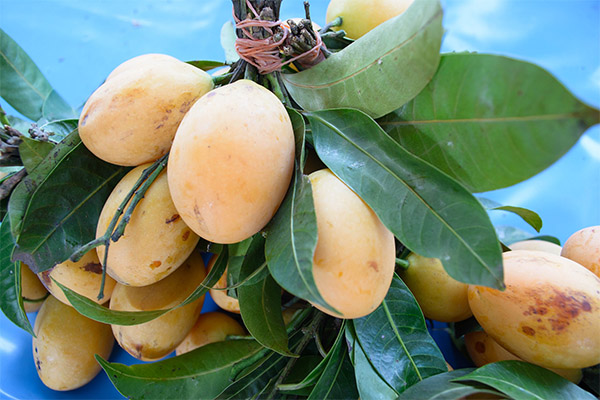
The seed is planted in a small pot. At the bottom of the vessel make holes and put drainage in it, then pour nutritious soil. It is better to buy a ready-made soil mixture for tropical plants.
For gandaria create the same conditions as for the mango. The ground should be moist, but not flooded. The optimal ambient temperature is plus 24 ° C. The pot is covered with a transparent plastic film. In the "greenhouse" sprouts will appear in 7-10 days.
During the winter, the plant is "extra-lighted", using a bright LED lamp. At the equator, the day lasts 12 hours, so you cannot leave the light on for a longer time in winter.
In tropical climates, the gandaria begins to bear fruit at the age of 8-10 years, grafted trees give the first fruits in the 6th-8th year. In apartment conditions it is unlikely to get a harvest. But a beautiful lush tree will decorate any interior.
Mature specimens grow a dense, lush crown. Therefore, gandaria is used not only as a fruit tree, but also as a decorative tree that gives dense shade.
«Important: All information on this site is provided for informational purposes only purposes only. Consult a specialist before applying any recommendations. specialist before using any recommendations. Neither the editors nor the authors shall be held liable for any possible harm caused by materials."


